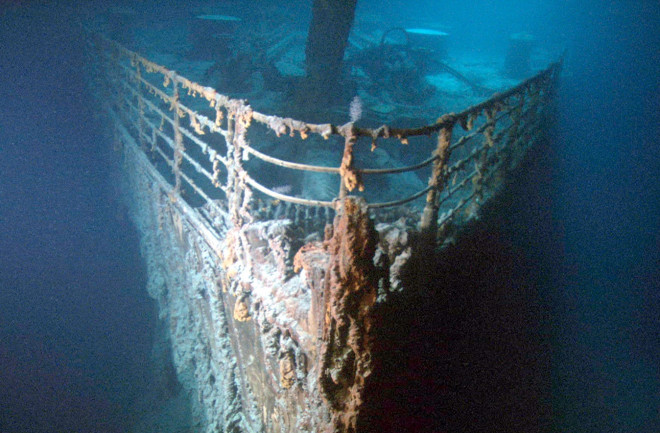A new 3D model of the Titanic, produced using 700,000 images shot by submersibles, reveals the 111-year-old shipwreck to be in a battered condition. Such landmarks as the grand staircase, now lie in complete ruins, while “rusticles” formed by iron-eating bacteria cover the surface.
The clock is ticking for the sunken ocean liner, once thought to be “unsinkable,” as experts say it has mere decades before it succumbs completely to the ocean floor.
To accelerate research, the new model provides a clear view of the ship and surrounding debris field, a massive improvement on past submersible footage, which captured only narrow angles of the gloomy wreck.
How Deep Is the Titanic?
The ship lies about 12,500 feet below the surface of the Atlantic, some 400 miles south-southeast of the Newfoundland coast.
While the ship sank before the outbreak of WWI, it wasn’t rediscovered until 1985, by a pair of submersibles called Argo and Jason that maneuvered using TV cameras and sonar outfitted by the Woods Hole Oceanographic Institute.
Read More: Looking Back on the Discovery of the Titanic
Inside the Titanic Wreck
A company called Magellan Ltd. (along with filmmakers Atlantic Productions) captured the 3D scan over the course of about 200 hours in the summer of 2022, using remote submersibles.
The result is littered with details: the serial number on a propeller, unopened champagne bottles on the ocean floor and abandoned shoes.
Is Anyone From the Titanic Still Alive?
No one knows for sure how the Titanic crashed into the fateful iceberg, whether it was head-on or a glancing blow, and the new model could help to resolve the mystery.
It could resolve (and bring up) many others as the field is full of professional and amateur experts alike who have tried to answer basic questions about the accident that claimed 1,500 people.
No survivors of the famous accident remain alive, meaning the rapidly deteriorating shipwreck is the world’s only surviving evidence.
Read More: 4 Titanic Artifacts That Didn't Go Down With the Ship
What Condition Is the Titanic In Now?
When the Titanic crashed into the sea floor, it picked up a host of iron-eating bacteria, leaving behind rust, experts say. It also acquired a bacterium called Halomonas titanicae that eats the rust and thereby destroys the old hull. Because of this cycle and other factors, experts say the Titanic will only exist for a few more decades.
“Step by step, everything is collapsing,” Titanic explorer and French naval commander P.H. Nargeolet told Discover. The worst damage has crept from the stern of the ship to the bow, collapsing state rooms and entire levels, while, notably, many glass portholes have survived.
As seen in the new 3D model, the rusticles produced by the breakdown process are dramatic in size, reaching as tall as a person. What’s not seen, however, is how the Titanic’s remains have become refuge for a wide range of sea animals, including grenadiers, long fish with bulging eyes that approach submersibles that come to the site.
Read More: Bacteria Are Eating the Titanic

